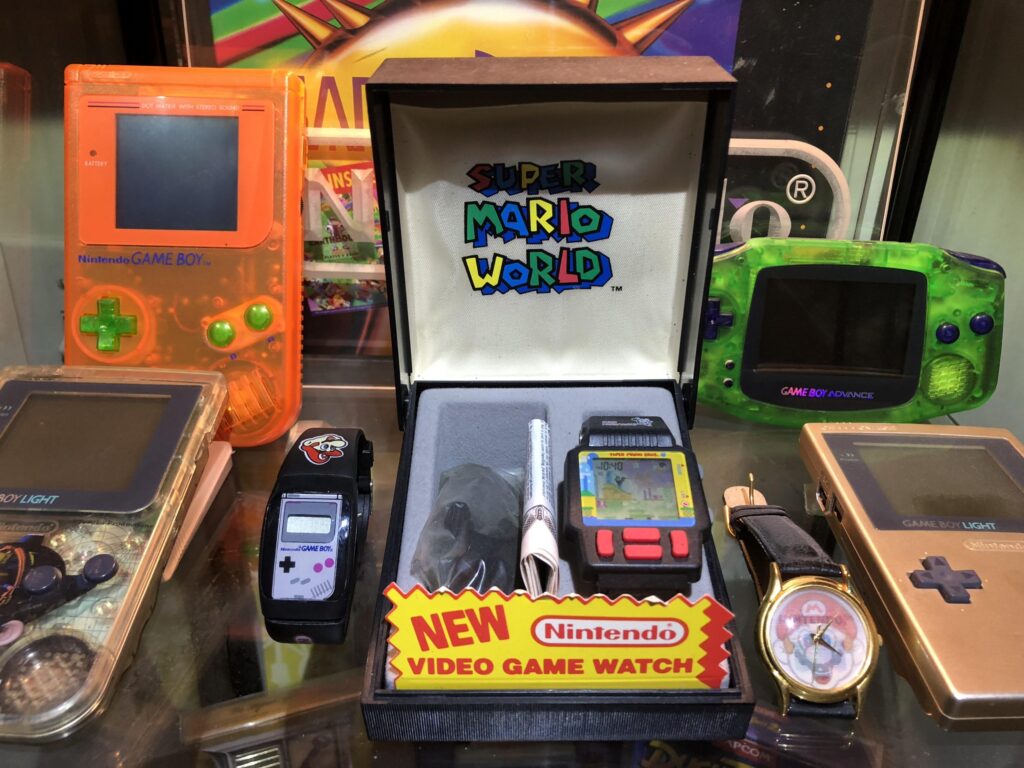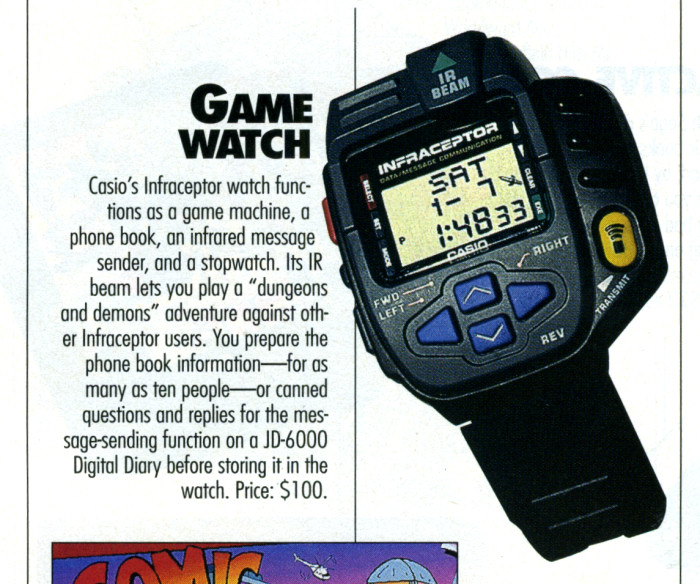Gaming Watches

A veritable benchmark in timekeeping, modern digital watch tech emerged in the early 1970s. When these initial digital timekeepers were released they were highly expensive—and functionally basic. However, as microchips and motherboards became smaller and smaller, the overall capability of digital watches to perform more complicated functions became increasingly prominent. Contemporarily—as digital wristwatches were hitting their stride with new innovations—the video game industry was gaining its legs. With computing and interactive video technology progressively gripping the imagination of a new generation of watch wearers, it was only a matter of time that these two industries would have some crossover. Initially, video game watches were released as novelties—a new way for brands to branch out and appeal to younger audiences. Some gaming watches featured hit brands like Barbie and Ghostbusters, adding a new layer of entertainment to the experience of toys and films. Truthfully, it may be that these gaming watches were a bit of a money grab back in the day. Despite this more potentially bleak sentiment, loads of people—both young and old—were able to bring the arcade with them everywhere they went. Porting pop culture darlings to simplified racing, platforming, and puzzle-solving games, these wrist-bound micro-cabinets added to the strength and cultural prominence of gaming/personal computing through the 80s and 90s.
Origins and Appeal
The first game watches ever released to the market were created by a company named Nelsonic in the mid-80s. Founded in 1981, this M.Z. Berger owned watch company sought to capitalize on bringing gaming and watchmaking together—after initial successes with licensed toy-brand watches. Bringing heavy hitters to the table such as Zelda; Super Mario Bros.; Q*Bert; Frogger; and Tetris (among many others), Nelsonic was a powerhouse of gaming watch releases. Borrowing the same technology used in calculators and calculator watches, these gaming watches required simple button presses to control the character sprites on screen. By today’s standards, this gaming style is pretty primitive. But with colorful case designs and rad depictions of beloved characters, they were a cool way to entertain oneself on the fly. Though Nelsonic eventually went under in 1999, their legacy lives on with both gaming and watch collectors. Having mimicked other handheld game innovators like Mattel (who released the first handheld game in 1976), Nelsonic made playing favorite characters, poker games, blackjack, and racing accessible on the fly, without the bulk of larger handheld devices.

Aside from Nelsonic’s appeal, other digital watch companies played with the technology of gaming wristwatches. A particular watch of note is Casio’s “Infraceptor JG-100”, released in 1995. This timepiece used IR (infrared) beams to play a basic fantasy game—in multiplayer mode—between watches. Its other complications included a stopwatch and a phonebook—something a bit more sophisticated than Nelsonic’s game watches. The phonebook function was especially important if you needed to call a friend for a meet-up, to slay dragons and the like. It may have set some geeks back a bit of change when it was first released, but it predates the now multi-billion dollar multiplayer game market by some years.
Though video games have far surpassed the simpler technology of early gaming watches, these timepieces still hold a fascination with nostalgic collectors. To many, they stand as a great historical crossover between video gaming and horology. Being indicative of a time when personal computing and entertainment were blossoming into how we understand them today—they’re a fun flashback that’s easy to interface with. With the market for these watches being formed exclusively by second-party or “used” sellers, it’ll be interesting to see if any company decides to bring these machines back. With many gamers reaching middle age, and beyond, gaming watches could easily have an audience—and perhaps influence a new generation of gamers to respect video gaming’s origins. Until then, if you’re a horologically minded gamer who wants a cool timepiece to show off to their friends, or if you want to take a break from playing Tetris on your smartwatch, seek out one of these gaming gems. They’re a nice in-between when it comes to unplugging, without being totally disconnected.
Times Ticking has been in operation for more than 30 years, since 1982. We have performed watch repair for customers both locally and internationally. If it Ticks! We KNOW it! Our team of watch repair technicians have a combined experience in watchmaking of over 120 years.

